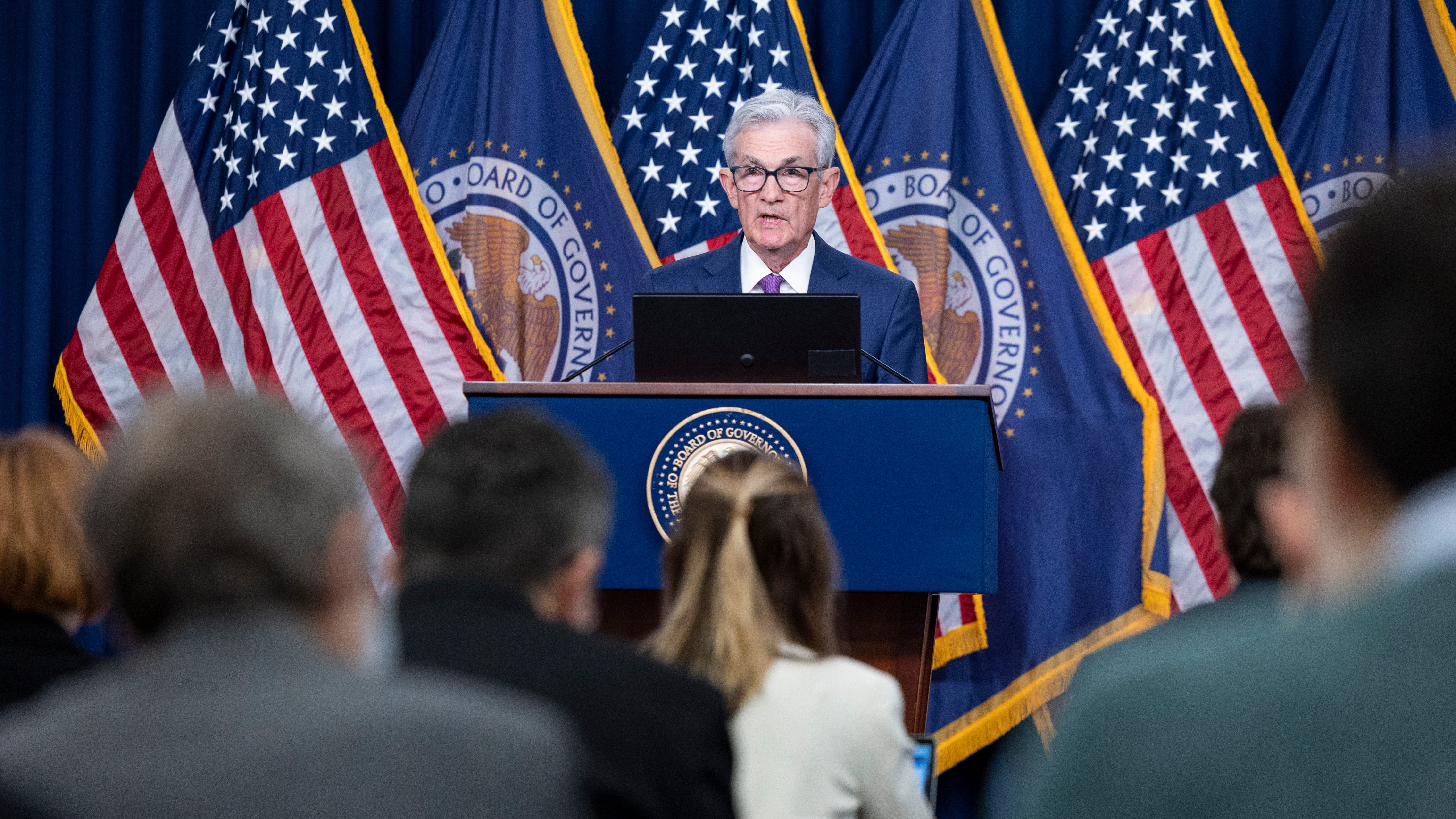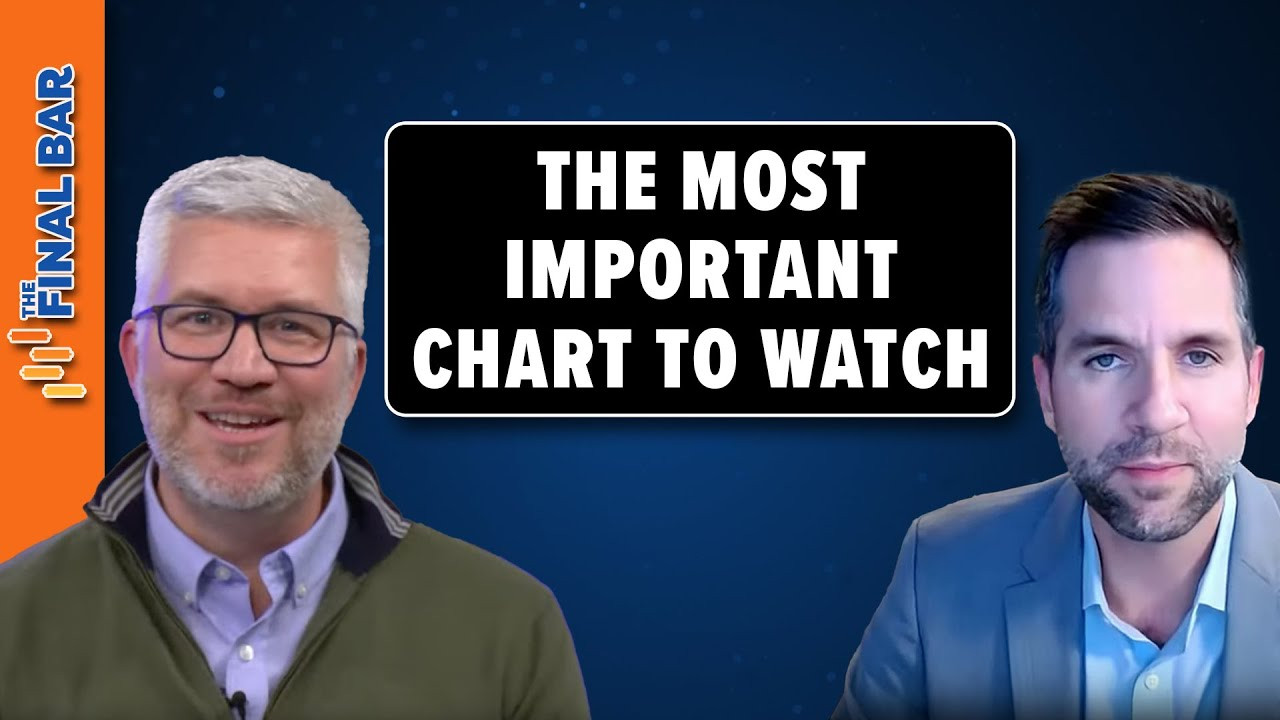The Federal Reserve is about to start cutting interest rates for the first time since 2020, but a big question looms: How far will they go?
It won't be an easy call. For more than a year, the Fed has kept borrowing costs at their highest level in more than two decades. That's made it more expensive to get a car loan, finance a business, or carry a balance on a credit card.
Now that the Fed has made clear it will be cutting interest rates, it will need to decide whether to opt for a modest quarter-percentage-point rate cut, or a more aggressive half-a-point cut.
That uncertainty has made this meeting one of the most highly anticipated in a while.
Here are three things to know ahead of the Fed's decision, due out at Wednesday at 2 p.m. ET.
The only certainty is that the central bank will be cutting interest rates. That's not exactly a "stop the presses" headline. Fed chairman Jerome Powell telegraphed it nearly a month ago.
It's the size of the rate cut that remains in doubt.
It's a tough call. Inflation has fallen substantially, with consumer prices rising by an annual 2.5% in August, down from a pandemic peak of 9.1% in June 2022. But prices are still climbing somewhat faster than the Fed would like.
At the same time, the U.S. job market is starting to show some weakness. Hiring has slowed and unemployment is inching up, hitting 4.2% last month.
All in all, the data is not pointing in a clear direction, meaning the Fed could really go either way.
Some economists who worry about the labor market believe the Fed should go bigger, delivering a half-percentage-point cut. Others feel the Fed can be more patient, starting with a quarter-percentage-point cut while it continues to assess the incoming data.
Bets on a quarter- vs half-a-percentage point cut have swung wildly on Wall Street. As of late afternoon on Tuesday, investors thought a larger cut was nearly twice as likely as the quarter-point move.
The size of the rate cut is bound to create split opinions in markets, but analysts also say that at least one thing is clear: Wednesday's rate cut won't be the last.
Investors expect the Fed to continue cutting rates in the next few months, marking a turning point from an extraordinary period in the U.S. economy when the Fed was forced to sharply raise interest rates to fight surging inflation.
Uncertainty about the pace of rate cuts will continue—but Wall Street also has other things on its plate, including the looming presidential election.
September is historically a bad month for markets—and, in election years, that rough patch extends through October. Investors are also keeping an eye on the tech sector, which has been volatile amid fears that companies are spending too much on artificial intelligence for too little return on their investments.
It's a lot to juggle, and analysts are urging investors to be patient.
"I'm a little dubious about the rate cut reducing uncertainty," says Steven Wieting, the chief investment strategist for Citi Wealth.
But Wieting also noted some of this uncertainty will likely die down in the coming months, especially following the U.S. elections.
"Ultimately, we'll get a clearer direction," he adds.
Borrowing money is going to get a little bit cheaper. Interest rates on car loans and credit cards should come down a bit. For people with money in the bank, on the other hand, the interest rate they get on their savings might also drop.
Meanwhile, mortgage rates have already come down in anticipation of the Fed's move. The average rate on a 30-year home loan is now 6.2%, the lowest since February 2023. That's still higher than the rates around 3% common during the pandemic, but it's down substantially from the peak last year of nearly 8%.
But here's one thing to keep in mind: Whether the Fed cuts rates on Wednesday by a quarter-percentage-point or by half-a-percentage point, it's going to take some time for these falling rates to really make a difference in the economy.
Monetary policy is like the hot water in some older houses. You can crank the water all the way to hot, but it still takes time for it to get there.
The US central bank is poised to lower interest rates for the first time in four years on Wednesday, a milestone moment for the world's largest economy.
The much anticipated move will influence mortgages, credit card and saving rates for millions of people in the US - and even around the world.
We won't know exactly how big a cut the Federal Reserve will make, or how much lower rates might fall, until the announcement.
So what does this mean for you?
The Federal Reserve's key lending rate - what it charges banks to borrow - sets a base for what companies charge people in the US for loans, like mortgages, or other debt, like unpaid credit card balances.
That rate has hovered around 5.3% for more than a year, the highest level since 2001, since jumping from near zero at the start of 2022.
A cut will bring some welcome relief to borrowers, though it will likely mean that some banks knock down the rates they are offering savers too.
Mortgage rates in the US have already dropped a bit, partially in anticipation of the move.
Americans will be most directly affected by a change. But central banks with currencies tied to the dollar often link their rate decisions to the Fed, such as Hong Kong and many Gulf states, so borrowers in those countries will also see an impact.
For the many people outside of the US invested in the US stock market, a cut is also likely good news.
Lower interest rates tend to boost stock prices for two reasons.
First, it means companies can borrow debt for less money and reinvest it to make the business more profitable.
Second, lower rates mean savings accounts and some other kinds of investments become less attractive, so investors tend to move their money towards things like stocks.
Compared to other central banks, the Fed is a bit late to the rate-cutting party.
Europe, the UK, New Zealand, and Canada have cut rates already, and so have many banks in emerging markets.
Those banks all had their own reasons for cutting rates, and how low the Fed decides to go depends a bit on what's pushing it to act.
The Fed raises or cuts rates in response to two factors: inflation and employment.
In 2022, when the Fed started raising interest rates, officials were focussed on inflation and wanted to get consumer prices, then rising at the fastest pace since the 1980s, to stabilise.
A jump in rates tends to bring down prices by making it harder to borrow, so people spend less on everything from consumer goods to homes and business equipment.
But less demand also means the economy isn't growing as quickly, and if it slows too much and actually starts contracting then that’s a recession.
In the past, the US economy has often entered recession after a series of rate hikes, costing millions of people their jobs.
And over the last year, unemployment in the US has been ticking higher, as hiring slows sharply.
So is the Fed cutting rates because it has triumphed in its fight against inflation or because the economy is in peril?
Many analysts maintain it's the former. Price inflation hit 2.5% in August.
Officials have said they're increasingly confident inflation is headed back to normal, so their attention is turning to the risks to the job market.
One factor officials have insisted does not inform into their decision is the election.
Republicans and Democrats have been watching this Fed's moves closely for two years, and a cut will likely help Democrats as the party in power.
But Fed chair Jerome Powell has said time and again that the bank is focused on economic data, not politics, in making its move.
Analysts are divided about whether the Fed will announce a cut of 0.25 percentage points or go for a bigger, and more unusual, 0.5 percentage points cut.
For a bank that has tried hard to telegraph its moves well in advance, the level of uncertainty is unusually high.
An isolated rate cut, even a bigger one, might not make that much of a difference to regular borrowers.
But this meeting is expected to mark the start of a series of actions that will bring borrowing costs lower over the next year or so.
Just how low remains a matter of debate.
Mr Powell will presumably be asked about it at the press conference after the bank's announcement, and he will presumably say it will depend on the data - his go-to response.
But the Fed will release a chart showing what its members predict, which could help shape that picture.
As a result, Wall Street leaders are no longer debating if the Fed will cut rates, it’s all about by how much. Some argue that Fed officials will opt for a smaller 25 basis point rate cut, given the economy remains far from recession in most economists’ views. But others, including some Fed officials, have said that a 50 basis point rate cut is the best option to prevent the labor market from weakening further after years of elevated borrowing costs.
Steven Wieting, a prominent financial expert who wears many hats at Citi Wealth, serving as chief economist, chief investment strategist, and interim chief investment officer, sees a 25 basis point rate cut as the most likely outcome this week, but he emphasized that no one can know for sure.
“We’ve looked for 25, but certainly we would take 50…if they want to do this more quickly, they could,” he told Fortune, adding that “they could decide that, ‘hey, if we can be rapid on the way up, we can be rapid on the way down.’”
However, Wieting noted that the Fed’s “historical proclivity” is to cut by 25 basis points whenever they are merely realigning monetary policy with current economic conditions like they are this week, while larger rate cuts are typically reserved for periods when the economy is on the precipice of a recession.
“And that’s what’s really important here. The underlying context is we don’t believe the economy is at the cusp of a collapse,” he said. “But is [current] monetary policy going to interact and cause more of a slowdown than is needed? We think it will. That’s why there is a need [for the Fed] to act.”
Still, while investors have been focused on debating the size of the Fed’s September interest rate cut, Wieting argued that’s not the most important factor at play for markets.
“It’s really a tactical question. And it really won’t play much into where they’re ultimately going. And, certainly, it’s not telling us the condition of the economy, which is what everybody wants to know,” he said.
Wieting noted that since he is expecting 200 basis points of rate cuts (a two percentage point drop in the Fed funds rate) by the middle of 2025, the Fed’s decision to cut rates by 25 or 50 basis points at this meeting won’t be a game changer. Significant interest rate cuts are coming, it’s just a matter of timing, he predicted.
The prospect for ongoing, economy-boosting rate cuts means the tone of Powell’s testimony, and the Fed’s longer-term outlook for rates, will be more important than the near-term 25 or 50 basis point decision. Fed Chair Jerome Powell has proven his ability to move markets with a few words in the past, including after he said “the time has come” to cut rates at the Fed’s annual Jackson Hole symposium in August, leading stocks to a then-record high less than a week later.
“He was able to ease effectively at Jackson Hole—guide the rate path down, explain what the Federal Reserve is doing, and embed that impact in markets,” Wieting noted.
But while dovish comments from Powell that imply more future cuts could benefit stocks in the near-term, and hawkish comments could send them in the other direction, the economy and corporate earnings, rather than the Fed, will determine the path ahead for markets over the next year. Upcoming economic data—jobs reports, retail sales reports, and the like—will be critical.
“I think underlying economic conditions will be much more important to financial markets than the Fed’s tactics at a particular moment,” Wieting emphasized. “The possibility that we just shift around the timing of these cuts slightly…really doesn’t matter very much.”
However, Wieting did argue that investors’ shifting expectations for rate cuts could lead to increased volatility in the near term. “And that might be an issue,” he said.
Most assets, including stocks and bonds, are extremely sensitive to rate cut expectations, which could lead to big shifts in trading volumes that can amplify price movements. For investors, Wieting recommended looking to “quality” stocks for outperformance during the upcoming, potentially volatile cutting cycle. These are companies that have strong balance sheets with low debt levels and consistent earnings that enable them to provide consistent returns even in trying times.
In particular, he argued that dividend aristocrats may outperform moving forward. S&P 500 companies that have raised their dividend for 25 consecutive years are given this title, which illustrates their ability to turn a consistent profit, and their willingness to return value to shareholders.
Dividend aristocrats have underperformed the S&P 500 this year, but Wieting noted they have a track record of outperformance that dates back decades, and are a good option for investors looking to dampen pending volatility.
“The strategy for uncertainty is [to] raise quality. If a firm is able to have the discipline to be able to raise its dividend every year, in some cases, for 25 straight years, it’s narrowing out the companies that have poor balance sheets. It’s actually narrowing out some riskier industries—cyclical capital intensive industries like autos, tend to fall out. That’s one strategy that has outperformed the market,” he said.
Wieting also pointed to the healthcare sector as a winning defensive play for investors, and argued that seeking some extra income through the bond market could make sense. Although bond yields have fallen from their peak, there are still many appealing options in fixed income for investors whose risk tolerance is a slightly lower.
“The pillars of investing are growth and income. Now, income has been significantly improved by the tightening cycle. Are we at peak bond income? No. But you can still, quite safely, build an income portfolio with a 5% yield,” Wieting said. “And what you do is you dampen your volatility for the risks you do want to take.”While building defensive income in a portfolio might make sense, Wieting believes that there is actually less risk in U.S. stocks than there was at the start of this year, despite their rise. He noted that after big tech stocks drove much of the market’s rally in 2023, nine out of 11 sectors of the S&P 500 have seen rising earnings this year. This broadening of earnings growth, which continues today, is a sign that the economy is far from recession. Wieting is forecasting strong 9% year-over-year earnings per share growth for the S&P 500 in 2024.
While many investors have been predicting an economic bust will wreak havoc on markets, Wieting doesn’t buy it. He argued that the U.S. economy has already experienced a rolling recession over the past few years—where some industries contract as others expand—which has made forecasting a challenge, and led to confusion among investors.
“There’s so many people out there with boom views and bust views, but there’s nothing V shaped here. It’s moving parts, it’s an economy that’s sort of in a recession in its manufacturing sector, in its housing sector, but we have very strong results for investment in technology and that’s ongoing,” he said. “It’s a more complicated story…the economy is not following the rules.”
Wieting noted that there are risks to markets in 2025, citing the election as an example, but he believes corporate earnings should continue to rise with the economy avoiding a true recession.
Although some investors are getting nervous with stocks trading near record highs while the labor market cools, he also emphasized that it always pays to remain invested. As the old saying goes: attempting to time market entries and exits is a fools’ errand.
“If you want to participate in economic development, those rising living standards, you have to participate with equity…I think you have to have some risk tolerance. Understand, you can decide how much drawdown risk you want to take in your portfolio, and have some safe assets and some growth assets—some income and growth. That sounds daunting, but one of the alternatives is that you’re going to lose most of your value to inflation, most of your wealth,” he warned.
A reduction to the central bank’s federal funds rate serves as a benchmark for other borrowing costs throughout the economy. And while that move has been widely anticipated, investors have been unable to predict how large the cut will be.
The Fed tends to move in 0.25% increments — and until recently, there was general agreement that it was likely to lower the rate by that amount. But a series of data points showing worsening economic conditions has made some analysts believe a 0.5% cut is more likely — and perhaps even necessary.
While the unemployment rate, at 4.2%, remains relatively low by historical standards, it has climbed in four of the last five months — a pace that tends to occur before recessions. And while layoff activity remains subdued, hiring rates have ground to a halt, making life miserable for many people looking for a job.
In a recent research paper, economists at the Minneapolis Federal Reserve argued the U.S. labor market may be even worse off than it appears, noting that by one measure, every open position now has 1.5 job applicants — well below the pre-pandemic average.
“We do not seek or welcome further cooling in labor market conditions,” Fed Chair Jay Powell said in a speech last month.
Among those in favor of a 0.5% cut is Bill Dudley, the former president of the Federal Reserve Bank of New York and now a columnist for Bloomberg News.
“When the labor market deteriorates beyond a certain point, the process tends to be self-reinforcing,” Dudley warned Monday, adding that investors increasingly see signs of weakness that the Fed could be missing.
In a blog post the same day, Preston Mui, senior economist at Employ America, a research group that advocates for full employment, said a large “up front” cut would signal that the Fed wants to get ahead of labor market deterioration.
If, instead, the Fed opts for a 0.25% cut even as the central bank indicates it will do another 0.25% cut at its next meeting in November, it will signal to markets that it does not have the appetite for being proactive, Mui said.
“If the Fed waits for layoffs to rise, they will probably be too late; fire prevention is more effective than fire fighting,” he wrote.
The counterargument: Markets could interpret a 0.5% cut as a sign the Fed thinks the economy is in worse shape than even the more alarming recent data suggests.
“A (0.5%) cut is usually done in emergencies,” like the Covid-19 pandemic, said Mark Zandi, chief economist at Moody’s financial group. “Some could interpret that as the economy going off the rails.”
A 0.5% cut would more directly affect rates tied to the fed funds rate, including credit cards, home equity lines of credit and small-business loans.
However, substantial relief in the short term from either a 0.25% or 0.5% cut is unlikely, according to Greg McBride, chief financial analyst at Bankrate.
“By itself, one rate cut isn’t a panacea for borrowers grappling with high financing costs and has a minimal impact on the overall household budget,” McBride wrote in a note released Monday. “What will be more significant is the cumulative effect of a series of interest rate cuts over time.”
Consumers should continue aggressively paying down high-cost credit card debt or home equity lines of credit carrying double-digit interest rates, he said.
“Interest rates won’t fall fast enough to bail you out of a tight situation,” McBride wrote.

















